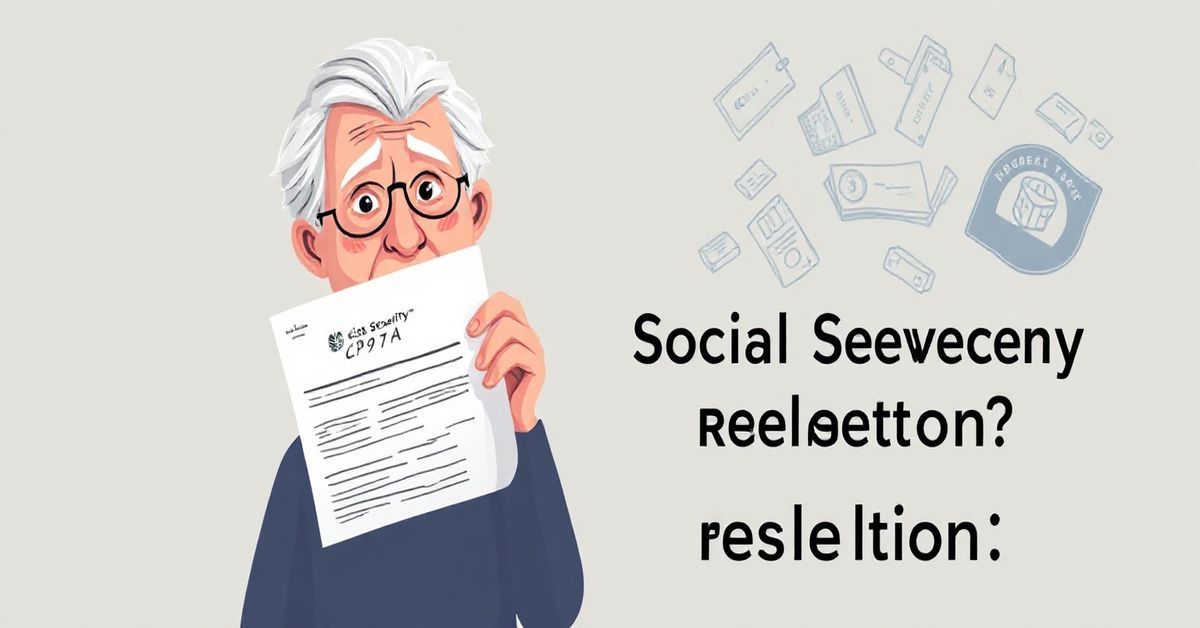Okay, so you’ve received a CP297A Notice from the IRS. That can be pretty scary, but don’t panic! It’s essentially a heads-up that the IRS is going to start taking a portion of your Social Security benefits to pay off taxes you owe. Let’s break down what this really means.
What Triggers a CP297A Notice?
The IRS doesn’t just jump to levying your Social Security benefits right away. They usually send several notices beforehand, requesting payment for your overdue taxes. You typically get several letters explaining that you owe back taxes and giving you opportunities to set up a payment plan or resolve the issue through other means. If those attempts are unsuccessful, or if you don’t respond, the IRS might then resort to more serious actions, including a levy on your Social Security benefits. In short, a CP297A is a last-resort action.
How a Social Security Levy Works
So, you’ve gotten this CP297A notice; what does it mean practically? Well, the IRS will send a copy of the notice to the Social Security Administration (SSA). The SSA will then start withholding a portion of your monthly Social Security benefits and send that money directly to the IRS until your outstanding tax debt is completely paid. It’s like they’re garnishing your Social Security, but instead of your employer being involved, it’s the SSA that’s doing it.
- The Amount Taken: The amount the IRS takes will vary based on several factors like the type of debt, your overall financial situation, and other federal requirements. It’s important to check the specific details of your CP297A notice to know exactly how much they plan to take from your benefits.
- Continuing Until Debt is Paid: The levy will keep happening each month until you pay off all your past-due taxes, including any penalties and interest that have piled up. So, the sooner you act, the sooner the levy will stop.
- It’s Not Forever (Usually): This sounds scary, but thankfully, once the IRS gets everything you owe them the levy will stop. However, they might not automatically stop the levy. That is why it’s so important to stay in contact with the IRS to make sure that everything is in order.
Understanding The Information on Your CP297A Notice
The notice should clearly state why the levy is happening, including:
- The Specific Tax Debt: What kind of tax you owe (e.g., income tax, self-employment tax) and the specific tax year or years.
- The Amount Owed: The total amount of unpaid taxes, plus penalties and interest, that you owe.
- How Much Will Be Taken: The percentage or specific dollar amount of your monthly Social Security benefits that will be taken.
- Contact Information: How to reach the IRS, typically a phone number and address to contact for more information or to resolve the issue.
- Your Rights: A brief explanation of your rights as a taxpayer, including the possibility of setting up an installment agreement or filing an appeal.
Read this notice very carefully. Don’t just assume you understand it; make sure to check every detail!
Who Is Affected By the CP297A Notice?
This particular notice applies to people who:
- Receive Social Security Benefits: This includes retirement, disability, and survivor benefits.
- Have Outstanding Tax Debt: Have not paid their federal taxes and have not resolved this debt with the IRS through other means.
- Are Subject To Levy: The IRS has determined that a levy on Social Security benefits is the appropriate next step for collection of taxes they owe.
Related Tax Concepts
- Tax Levy: The legal seizure of property (including money) to satisfy a tax debt. The CP297A notice is a specific kind of levy that targets Social Security benefits.
- Tax Lien: A legal claim against your property. If you don’t pay your tax debt, the IRS can file a tax lien. That means that when you sell your property, some of the proceeds will go to the IRS. The CP297A, on the other hand, is not a lien, but a levy.
- Installment Agreement: A payment plan to pay off tax debt over time. This can be an alternative to the levy, if you can work it out with the IRS.
- Offer in Compromise (OIC): An agreement with the IRS that allows you to settle your tax debt for a lower amount than what you originally owe. This is a good option for some taxpayers who don’t have the ability to pay back their full tax burden.
What Should You Do If You Receive A CP297A Notice?
Receiving this notice doesn’t have to be the end of the world. Here’s what you should do:
- Don’t Ignore it: The worst thing you can do is ignore the notice. The IRS isn’t going to go away just because you pretend the problem doesn’t exist. It is essential you act quickly.
- Contact The IRS: Reach out to the IRS immediately. The number to contact them is likely printed somewhere on the notice. Don’t be afraid to call and ask questions. The earlier you communicate, the better.
- Understand The Issue: Make sure you understand why the IRS has levied your benefits. Request clarification if the notice is not clear.
- Explore Your Options: Discuss payment plans, installment agreements, and offers in compromise with the IRS. You might be able to get the levy stopped if you commit to paying your debt another way.
- Consider Professional Help: If the situation is complicated or you feel overwhelmed, it may be wise to get professional help from a tax professional such as an Enrolled Agent, CPA, or tax attorney. They can guide you through the process and deal directly with the IRS on your behalf.
- Keep Records: Keep copies of all correspondence with the IRS, payment records, and any other documentation related to the levy.
Common Mistakes and Misconceptions
- “They can take all my Social Security”: The IRS cannot typically take all your benefits. There are legal limits on the percentage or amount that they can levy. However, it is still important to work towards resolving the debt as soon as possible, as they will continue to take a portion each month until it is paid off.
- “This is just a threat”: No, the CP297A is a real action that will cause the SSA to withhold money from your benefits.
- “I can get out of it by not answering”: Ignoring the notice will only make things worse. The IRS will continue with the levy.
- “I’m too old to have tax problems”: Anyone can have tax issues, regardless of age. However, it is usually simpler to deal with them as early as possible.
- “My situation is hopeless”: There are almost always options for resolving your tax debt, even if it looks bleak right now. Communication with the IRS and exploring your available alternatives are key.
The CP297A Notice can feel overwhelming, but by understanding what it means and how to address it, you can tackle the situation and get back on track. Don’t hesitate to reach out for help if you need it. Good luck!

